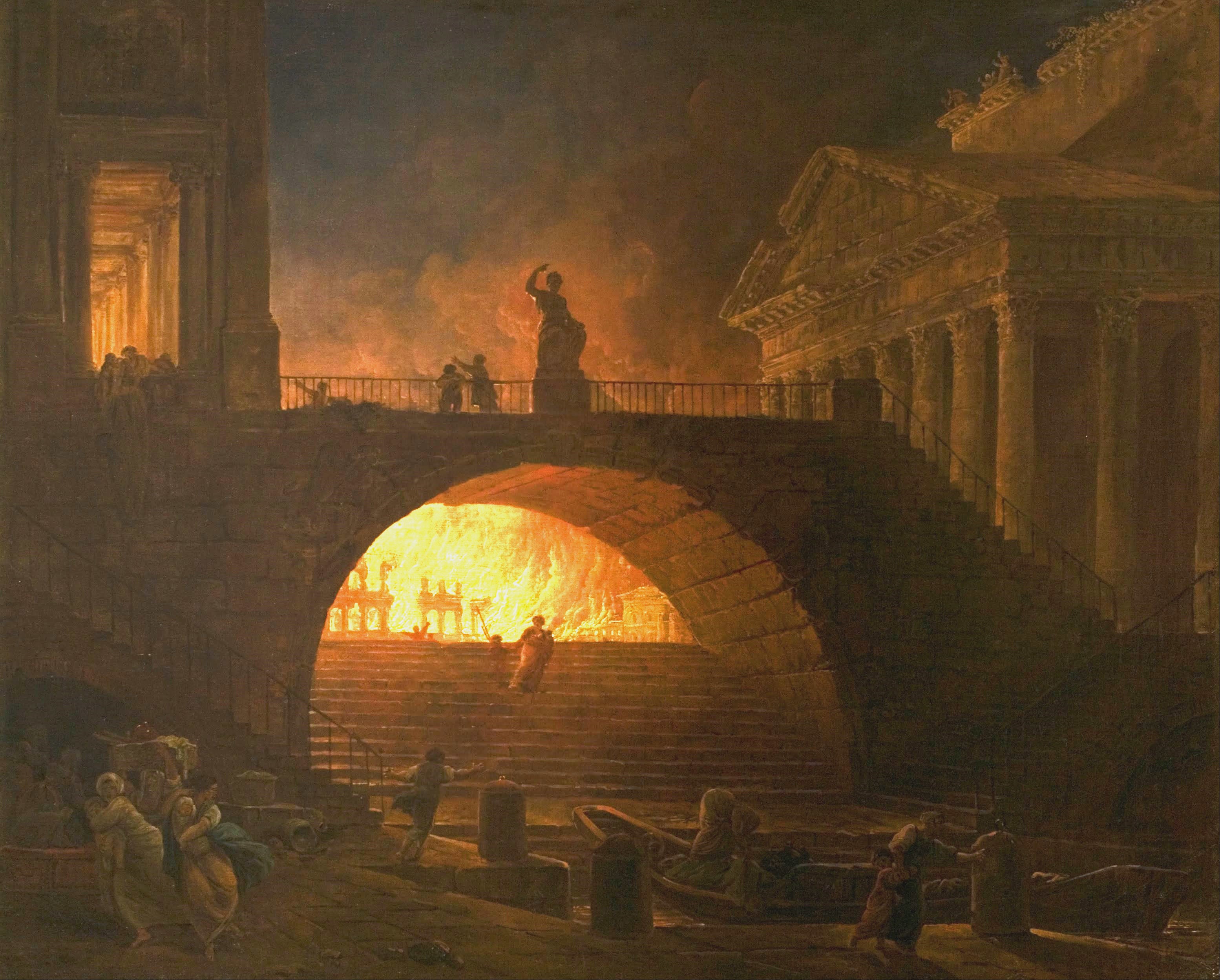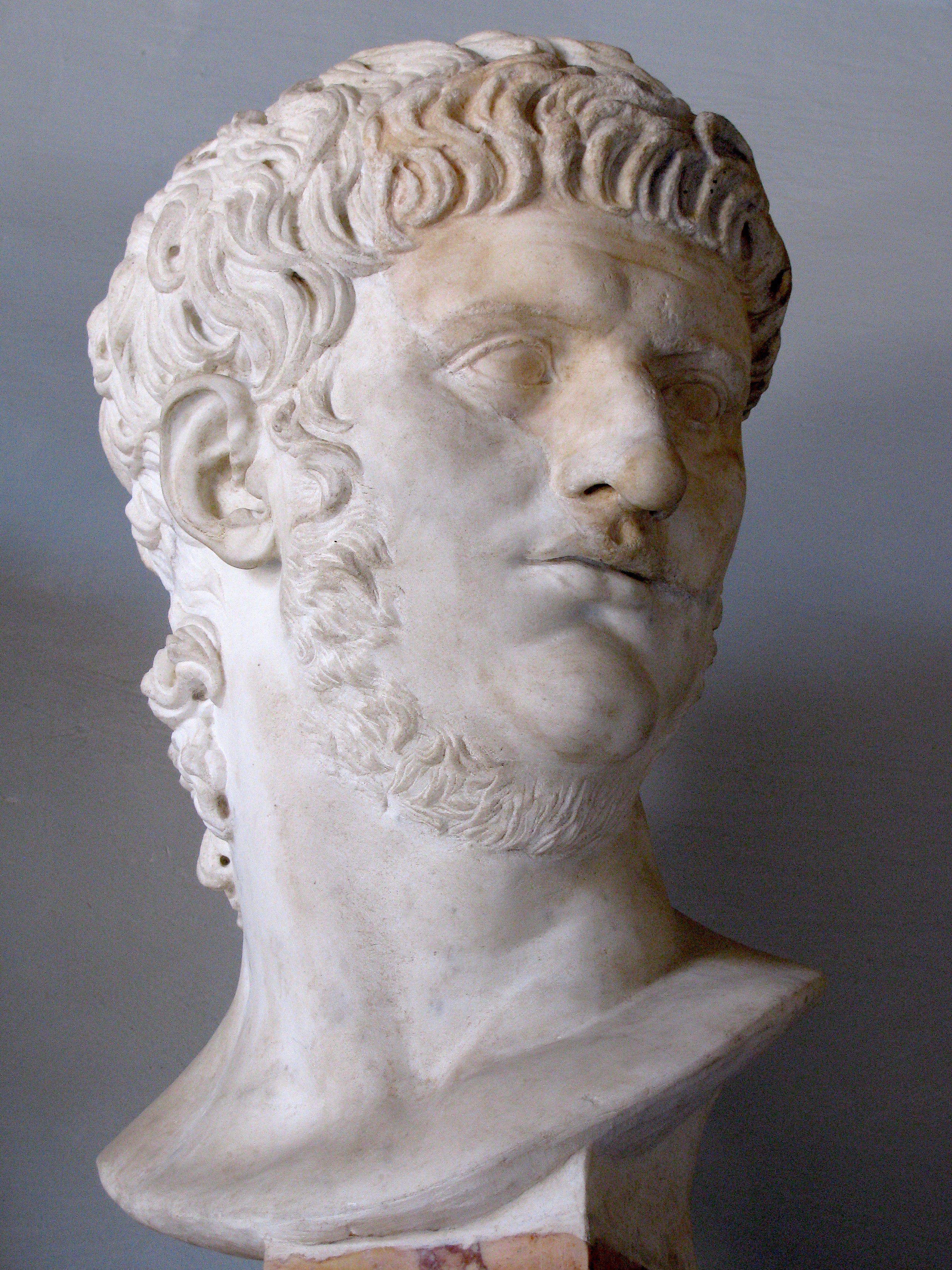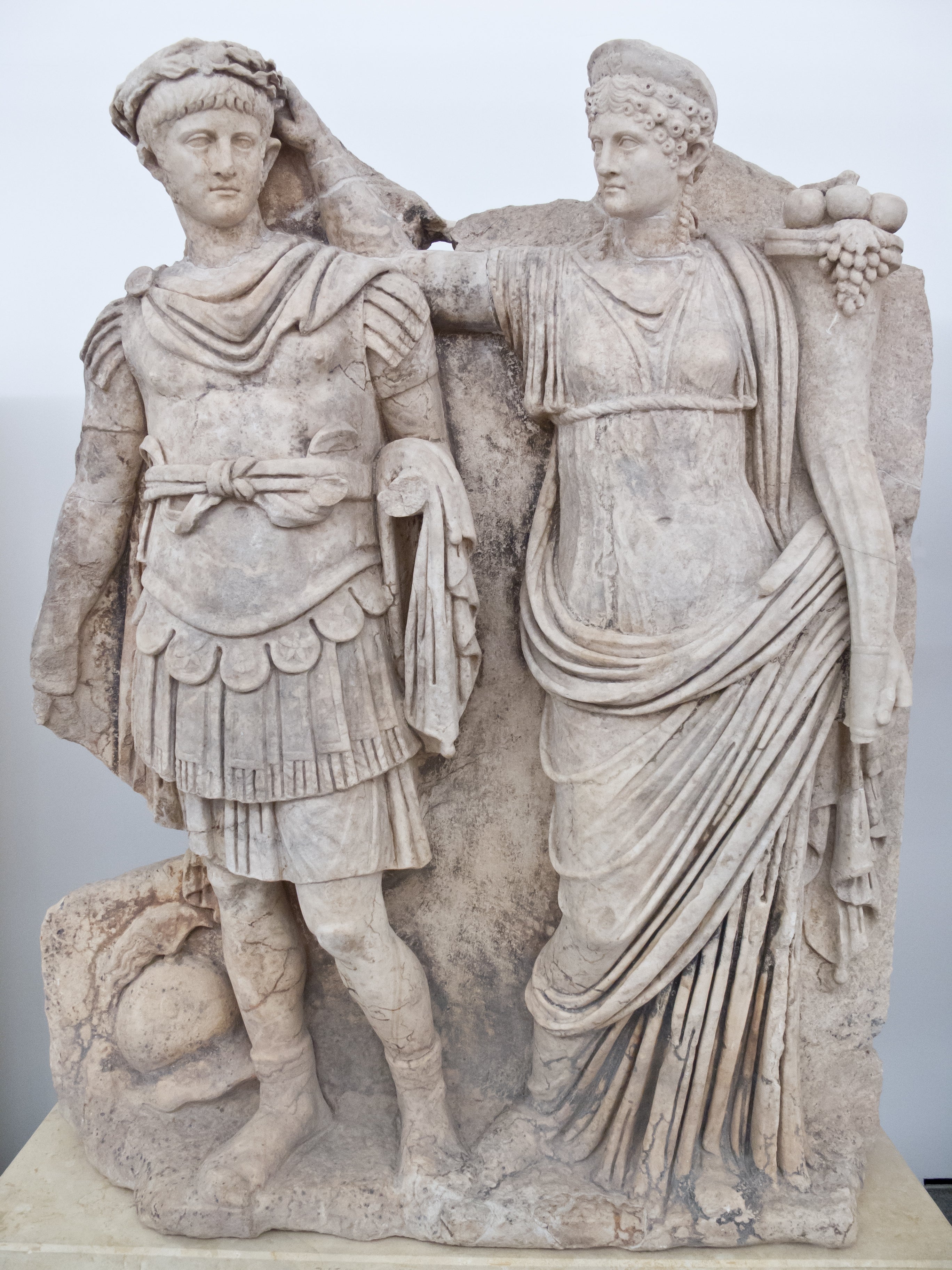Investigating an ancient mystery: What really happened during Nero’s Great Fire of Rome?
New research reveals the truth about ruthless populist politics – Roman-style, writes David Keys

Your support helps us to tell the story
From reproductive rights to climate change to Big Tech, The Independent is on the ground when the story is developing. Whether it's investigating the financials of Elon Musk's pro-Trump PAC or producing our latest documentary, 'The A Word', which shines a light on the American women fighting for reproductive rights, we know how important it is to parse out the facts from the messaging.
At such a critical moment in US history, we need reporters on the ground. Your donation allows us to keep sending journalists to speak to both sides of the story.
The Independent is trusted by Americans across the entire political spectrum. And unlike many other quality news outlets, we choose not to lock Americans out of our reporting and analysis with paywalls. We believe quality journalism should be available to everyone, paid for by those who can afford it.
Your support makes all the difference.For almost 2000 years, the ancient world's most notorious fire - the Emperor Nero's Great Fire of Rome – has been shrouded in mystery.
But now, new research is shedding fresh light on what really happened – and the political catastrophe it triggered.
What's more, the search for new evidence about Nero's reign, is revealing how troubled populist politics were a feature of ancient political life, just as much as they are an element of 21st century politics.
The new research confirms that the accusation, that the Emperor Nero sat on his imperial balcony, 'fiddling while Rome burnt', was a malicious fabrication concocted by his political enemies.
But the remarkable new investigation – carried out by the one of the world's greatest authorities on the period – reveals, for the first time, that the scale of the Great Fire itself was also exaggerated by Nero's detractors.
Roman chroniclers, trying to curry favour with his anti-Nero political successors, claimed that around two-thirds of Rome had been utterly destroyed or badly damaged by the conflagration – and that line was faithfully reported by subsequent historians across the millennia.
But now, the new investigation – conducted by British archaeologist and historian Professor Anthony Barrett – has revealed for the first time that only 15-20 percent of the city was actually destroyed. Much of the crucial information, that he has drawn on, is ancient fire-damage evidence, unearthed over recent years by Italian and French archaeologists.
Professor Barrett's research - due to be published in book form later this month - has, for the first time, reconstructed the extraordinary political story of how and why the Great Fire of Rome in 64 AD was exaggerated and then exploited for politically revolutionary purposes.

The fire took place just 90 years after the Roman aristocracy's political power had been substantially extinguished by the changeover from republican 'democracy' to imperial dictatorship – and there was therefore still latent aristocratic hostility to holders of imperial office (and some remaining sentiment supporting a return to the republican system).
But the new research reveals that it was the nature of the fire that seems to have turned that latent generalised aristocratic anti-imperial sentiment into a more focused anti-Nero crusade which ultimately led to a revolt which overthrew him.
Using a combination of archaeological and historical evidence, the new investigation shows that, as well as destroying large numbers of cramped tenement blocks, the fire also destroyed the luxury villas of the top aristocratic families (conceivably around 50-70 of them).
What's more, the Emperor's reaction to the fire then hit the aristocracy's pockets.
In order to rebuild the devastated parts of Rome, Nero decided to increase taxes on the provinces – which would have hit the great provincial estates owned by the aristocracy.
But to make matters worse, Nero then went on, for the first time in Roman history, to debase the Empire's coinage by issuing silver coins that were only 80% silver (with the rest of their weight being mainly in copper). Some of the crucial evidence for his post-fire coin debasement policy has only recently been discovered by scientists at the University of Warwick, who used micro-drills to extract tiny samples from a series of Neronian 'silver' coins.
Nero's post-fire rebuilding projects were so grandiose and expensive that, in order to finance them, he had to keep as much pure silver in the imperial treasury as he could.

The new research shows how cutting the silver content of newly issued coins allowed him to do just that – but he still insisted that taxes (including taxes on aristocrats) had to be paid in pure silver - not in his own new debased coinage.
The fire-induced coinage changes thus meant that the aristocrats' plebeian tenants paid their rents in debased coinage, while the aristocratic estate owners had to pay their imperial taxes in pure silver.
It was largely through that monetary process that Rome's Great Fire metamorphosed into a political one.
After almost 2000 years of silence, Professor Barrett's new investigation is the first to reconstruct those post-fire financial mechanisms that led to Rome's temporary political collapse (attempted revolution, followed three years later by military revolt, civil war, mass murder, mutiny and barbarian uprisings).
Politically, psychologically and socially, Nero was one of the most interesting rulers of the ancient world.
He was an unconventional, populist and utterly ruthless politician who exacerbated political divisions within Rome – and the Roman world in general.
His relationship with the population was almost totally driven by class.
The poorer, less educated sections of the population seem to have adored him.
His complete disregard for upper-class behavioural norms scandalised the elites – but did not damage his standing among the poor
On the other hand, the social and economic elites (including more liberal-minded intellectuals and others) tended to loathe him.
Like many populist political leaders in our 21st-century world, he was very much a 'Marmite' ruler!
Despite (and sometimes perhaps because of) his convention-challenging behaviour, his supporters turned a blind eye to his often monstrous actions.
Among his more ruthless deeds were the murders of his mother, his 14-year-old stepbrother, his ex-wife, his cousin – and probably his aunt.
But his huge building projects and large-scale public employment schemes (which, in modern times, have sometimes been compared to Franklin D Roosevelt's New Deal) endeared him to ordinary working class Romans.
And his refusal to help the wealthier victims of the fire (including those elite families who had lost their palatial homes to the flames) also, no doubt, appealed to those nearer the bottom of society.
His complete disregard for upper-class behavioural norms scandalised the elites – but did not damage his standing among the poor.
As well, as marrying three women (and killing one or possibly two of them!), he also married two (or possibly three) men. In at least one of those same-sex unions, Nero was the bride – while, in the other, he was the groom.
Same sex relationships (including under age ones and unofficial marriages) were widely accepted in the Roman world – but only if they respected Roman social and gender power norms. Freeborn men (including high status ones) were expected to be the dominant (i.e. penetrative) partners in any sexual relationship (whether heterosexual or homosexual) - and (by being the bride in at least one of his male marriages), Nero deliberately and very publicly defied that convention. In homosexual relationships, social norms also required the non-dominant partner to be a slave or ex-slave - and again, Nero defied that convention by becoming the bride (rather than the husband) of an ex-slave.
The Emperor also defied social convention in other ways. Although he physically obliterated much of his own family, he seems to have craved the adoration of ordinary citizens. Contrary to the accepted social norms that applied to elite Romans, he adored performing acts of athletic, theatrical and musical prowess in front of the general public.
So revered was he in some segments of society, that, after his suicide or assisted suicide (during a military coup), his supporters believed he had escaped death – and that he would return in triumph to rule Rome once again.
In that respect, his demise, in some ways, resembled that of the later quasi-mythological figure, King Arthur – 'the once and future King' (still destined to return to rule Britain in its hour of need!).
Uniquely, in the Roman world, there were, in the 20 years after Nero's death, three unsuccessful anti-government revolts led by rebels claiming to be the 'still living' Emperor!
What's more, some of his enemies also bought into a variant of that 'death-defying' Neronian narrative – and some Christians believed that he would return to Rome as the Antichrist. Indeed, the still notorious 'Number of the Beast' (666) in the Biblical Book of Revelation (written around 30 years after Nero's demise) was almost certainly a coded reference to him as the Devil or the Antichrist. Nero appears to have sought to scapegoat Rome's small Christian community for the fire - and ancient sources suggest that he launched a persecution of them and that St Peter and St Paul will both executed during his reign.
Like two out of the three other most erratically murderous Roman emperors, Nero assumed power when he was in his mid-teens (actually aged just 15). His bloody excesses (and those of two other teen emperors, Commodus and Elagabalus) may well have been the psychologically-driven consequences of inheriting unlimited power at such a young age.
However, although Nero exploited the Great Fire to rebuild Rome, the accusation, that he started it, is almost certainly unfounded.
“The traditional theories that Nero himself started the fire, or that Christians started it (to hasten the second coming of Christ) are both almost certainly wrong. There is absolutely no credible evidence supporting either of those two explanations,” said Dr Barrett, Professor Emeritus at the University of British Columbia.
“Instead, the conflagration probably started in the southern half of the city – probably in some sort of workshop or storeroom,” he said.
Interestingly, mid/late July, when the fire broke out, is by far the driest time of the year in Rome – and the period when any conflagration would have spread fastest.
Historical accounts say that the fire's spread was assisted by a strong wind. Indeed a strong northbound wind (known as the Sirocco), originating in the Sahara, does sometimes hit Rome in the summer. What's more, the historical and archaeological evidence confirms that the fire did indeed initially spread in a northerly direction.
All the new evidence on the Great Fire is about to be published in Professor Barrett's new book - Rome is Burning: Nero and the Fire that ended a Dynasty. It will be published by Princeton University Press later this month in the USA and next month in the UK.




Join our commenting forum
Join thought-provoking conversations, follow other Independent readers and see their replies
Comments